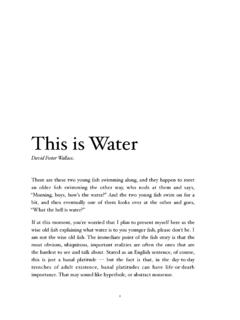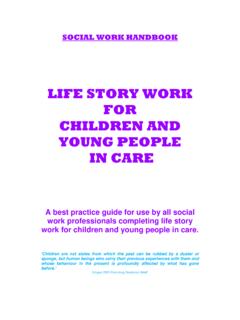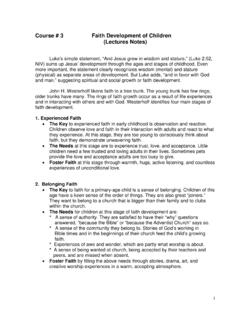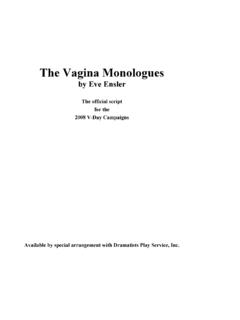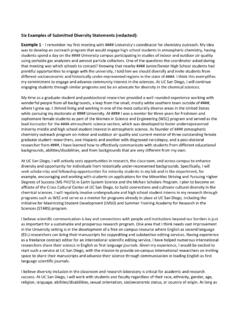Transcription of STEM Family Activities Workbook - Boston Children's Museum
1 The STEM Family Activities Kit is a collaboration between the Boston Children s Museum and the Massachusetts Department of Early Education and Care. This work is funded by the federal Race to the Top Early Learning Challenge grant, awarded to the Department of Early Education and Care in 2012. The goal of the STEM Family Activities Kit is to provide information and Activities for families and to support them in focusing and refining the naturally inquisitive behaviors of infants to five-year-olds on science, technology, engineering, and math (STEM). The content and Activities are aimed at both children and their families, who can initiate and extend STEM learning at the partnersBoston Children s Museum Boston Children s Museum (BCM) is a welcoming, imaginative, child-centered learning environment that supports diverse families in nurturing their children s creativity and curiosity.
2 BCM promotes the healthy development of all children so that they will fulfill their potential and contribute to our collective well-being and future prosperity. BCM builds brains every day! Come visit our Peep s World exhibit, where children develop basic science skills like observing, predicting, and problem solving by playing with water, and of early education and Care (eeC) The mission of the Massachusetts Department of Early Education and Care (EEC) is to support all children in their development as lifelong learners and contributing members of the community and to support families in their essential work as parents and caregivers.
3 EEC is responsible for the licensing and regulation of approximately eleven thousand Family , group, and school-age child-care providers, as well as nearly seven hundred residential care programs and adoption/foster care placement agencies. EEC also administers financial assistance for over fifty thousand children, enabling them to access high-quality early education and out-of-school time programs that support their developmental success; provides additional parenting resources and services for families; and supports the professional development of educators in the early education and care Massachusetts Department of Early Education and Care (MA EEC) recognizes the importance of providing early childhood educators and families with the skills, training, knowledge, and understanding needed to help young children grow and learn.
4 To that end, the MA EEC has partnered with the WGBH Educational Foundation to create , a new website filled with media-rich educational resources designed to support early learning. Developed by a team of curriculum experts, educators, and parents, the website consists of three main sections Educators, Parents, and Children and features a comprehensive, standards-based ELA/STEM curriculum for preschool, professional development modules, Activities and best practice videos for parents, and developmentally appropriate media for young children. parents, and developmentally appropriate media for young children. STEM Family Activities WorkbookWhat Is steM all about?
5 2 Why Teach Science to Young Children?Massachusetts Pre-K STE (Science, Technology, Engineering) Standards ..10 Brain Building 101 ..12 Brain Building for STEM ..13 More Questions Than Answers: Why is the Sky Blue?..14 Productive Questions to Ask Children ..15 Let s Try It Out ..17 STEM Family Workshops ..20 Introduction to the STEM Family Activities Workshops ..21 o Session One: Science ..22 o Session Two: Technology ..34 o Session Three: Engineering ..48 o Session Four: Math ..62appendix ..76 What s in the Kit?
6 77 Massachusetts STEM Standards ..78 sources ..88 o Books, Articles and Other Materials ..89 o Websites ..89 Acknowledgments and Thanks ..90 ThE PAr TnEr S rEMInd yOu ThAT :Contents Preschool is the perfect time to cultivate positive attitudes about learning. Very young children are quite capable of doing science. Preschoolers naturally have many of the capabilities of scientists. Preschool is the perfect time to develop science process STEMAll About?is2 STEM is an acronym. It was used originally by the government to describe fields of study that helped immigrants get work visas: science, technology, engineering, and math.
7 Today, educators are linking these areas together in what is called STEM curriculum. When we break down the acronym into its parts, we see that early childhood programs practice STEM Activities every day. Science Activities include exploring water and sand, comparing and contrasting natural materials like rocks and soil, blowing bubbles, and planting a garden. Technology Activities include computers, but also identifying simple machines like scissors, gears, wheels, and pulleys and looking through a magnifying glass to count the legs on a bug. Engineering regularly happens in an open space with blocks. Playing with blocks allows children to plan and design structures with minimal adult direction.
8 In addition to planning and constructing buildings, children create ramps and roll balls across the floor. Math Activities include counting and matching shapes and making patterns. Measuring is easy too, especially with unit blocks, which come in standard sizes, each size twice as large as the next their children s first teacher, parents/caregivers* can expand their children s science learning by leading them toward discovery; encouraging their natural curiosity; noticing how they play with water, shadows, or sand; and encouraging them to observe the world. Modeling curiosity about everyday occurrences I wonder what will happen when I put the water into the pancake mix or I wonder what the moon will look like tonight can be a big help to children s science learning.
9 As children get older, families can build on their interests by asking open-ended questions: What are you working on now? What do you notice about how that bug is moving? What else have you seen other kids try? Writing down their thoughts and ideas and taking photos of their exploration are good ways to document their growth in science discovery. STEM Education Must Start in Early Childhood In an article published in Education Week, J. D. Chesloff neatly sums up the case for starting STEM education in early childhood: It is my feeling that you can t start early enough: Young children are natural-born scien-tists and engineers.
10 Like STEM, investment in early-childhood education is a workforce-pipeline issue. Research has shown that high-quality pre-K cuts the rate of children being held back a grade in half; decreases juvenile arrests by a third; and increases high school attendance by a third, college attendance by a whopping 80 percent, and employment by 23 percent. High-quality early-learning environments provide children with a structure in which to build upon their natural inclination to explore, to build, and to question. Chesloff is the executive director of the Massachusetts Business Roundtable, chair of the of the Massachusetts Board of Early Education and Care and chair of the executive committee of the governor s STEM advisory council.

